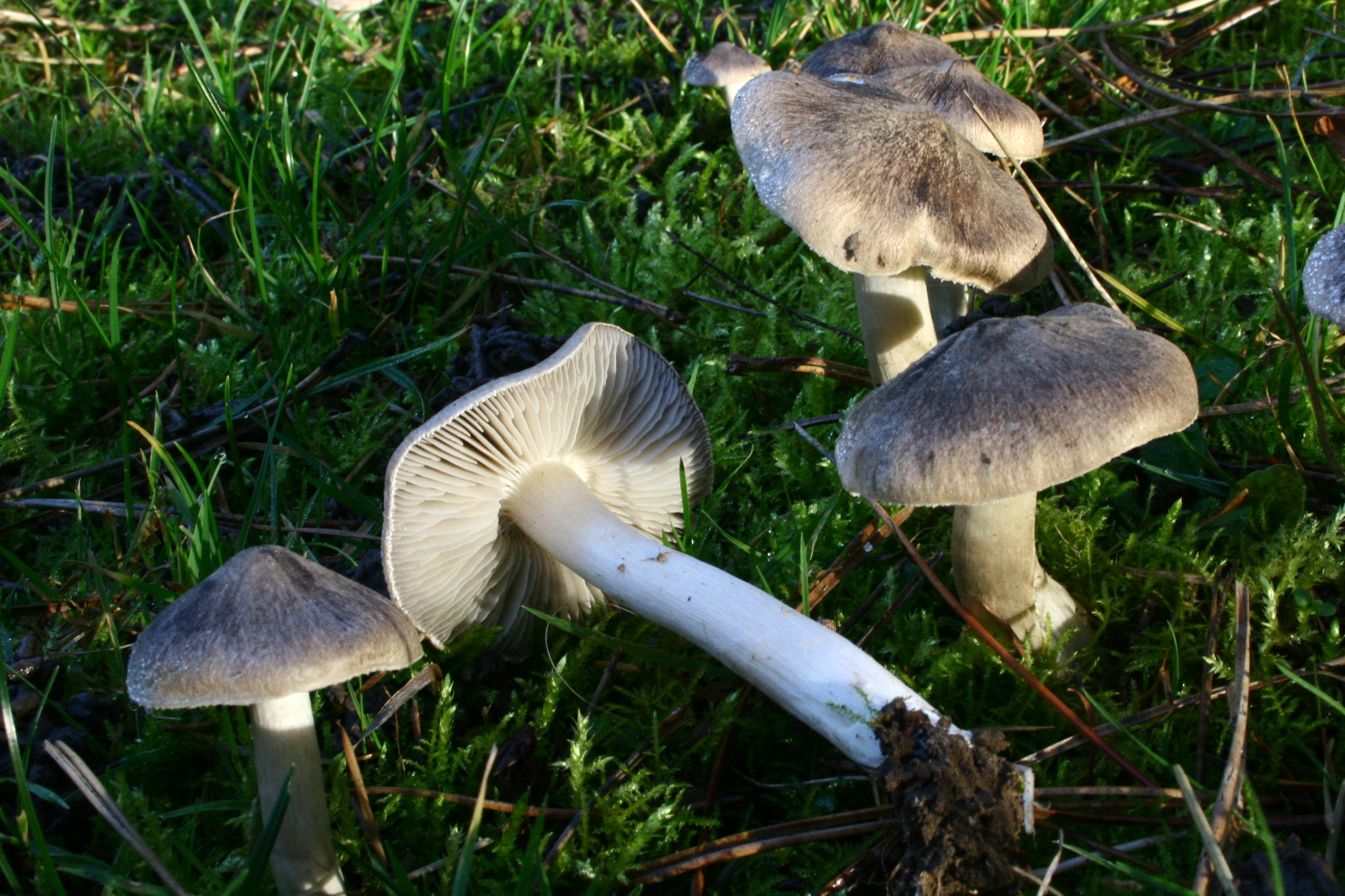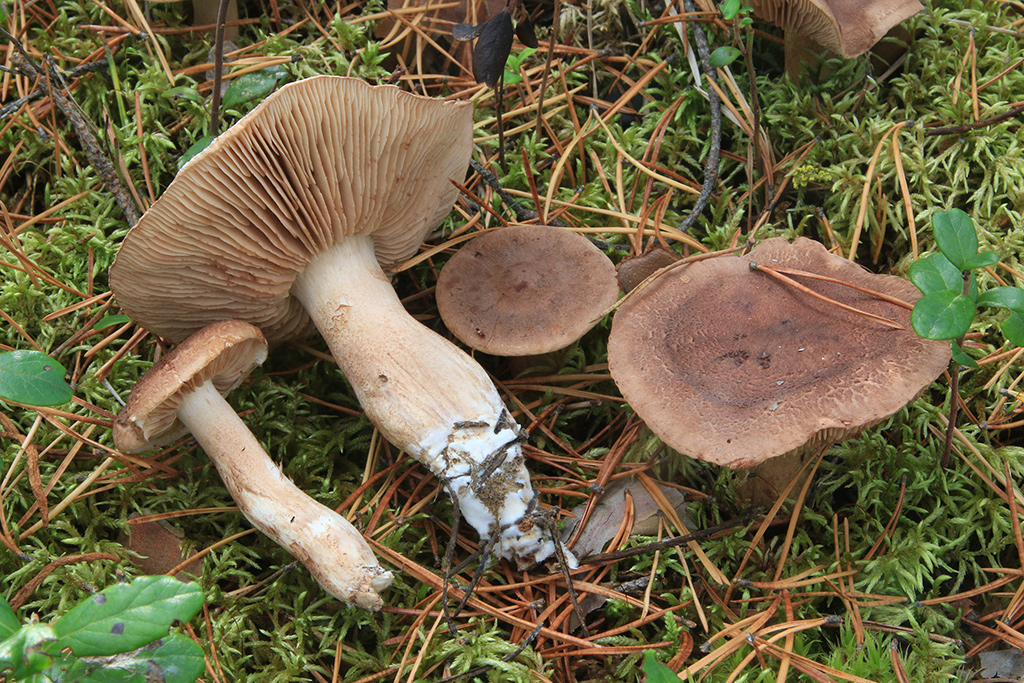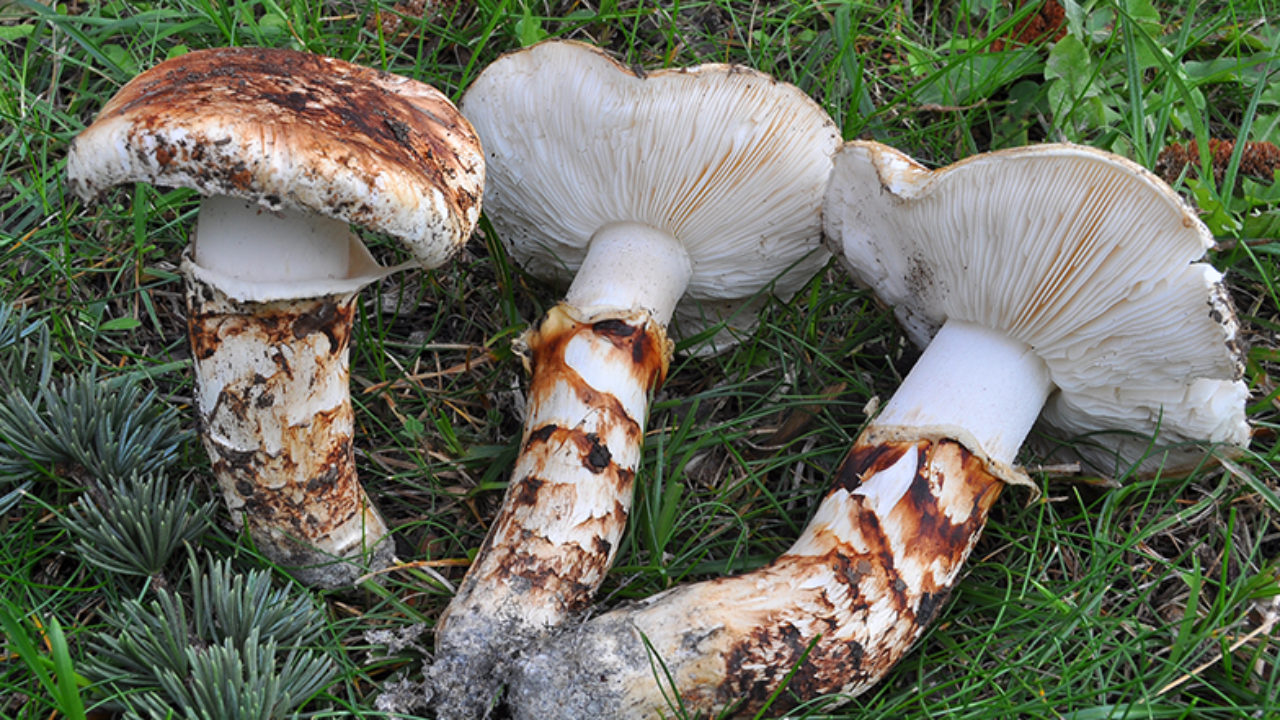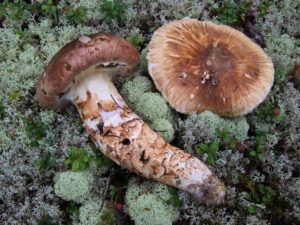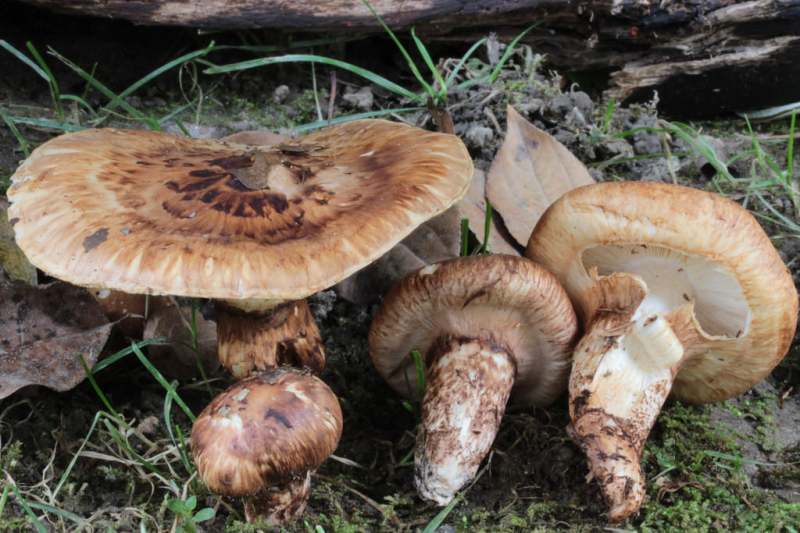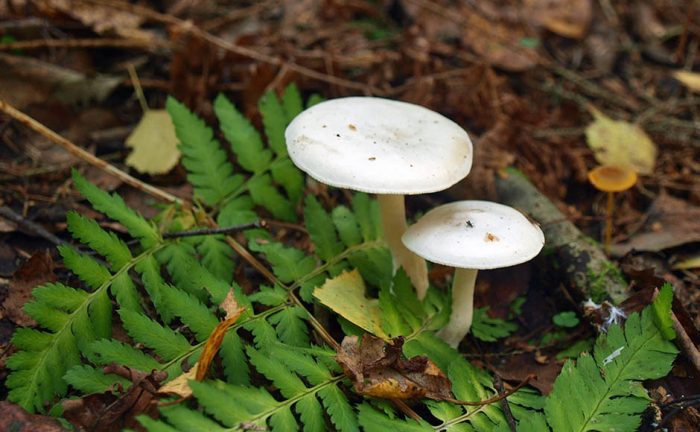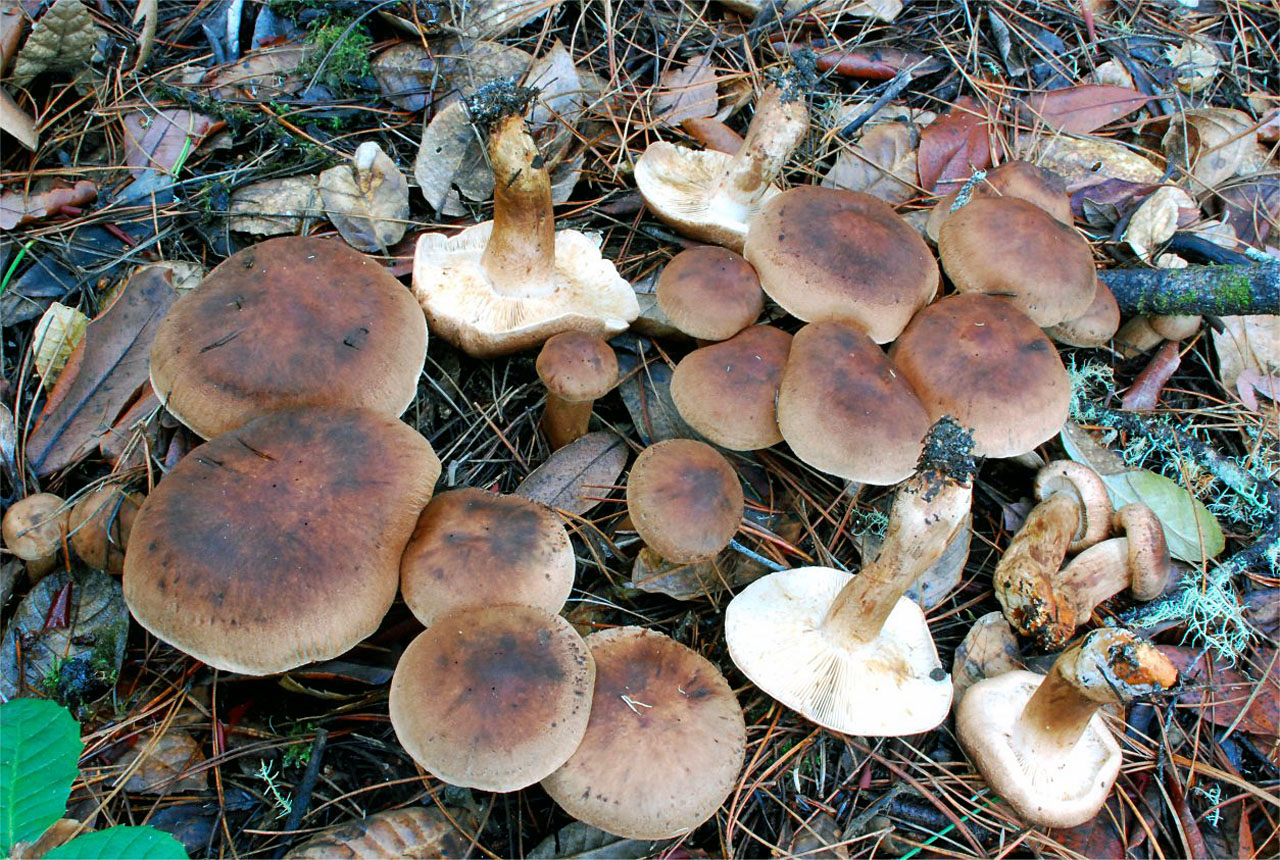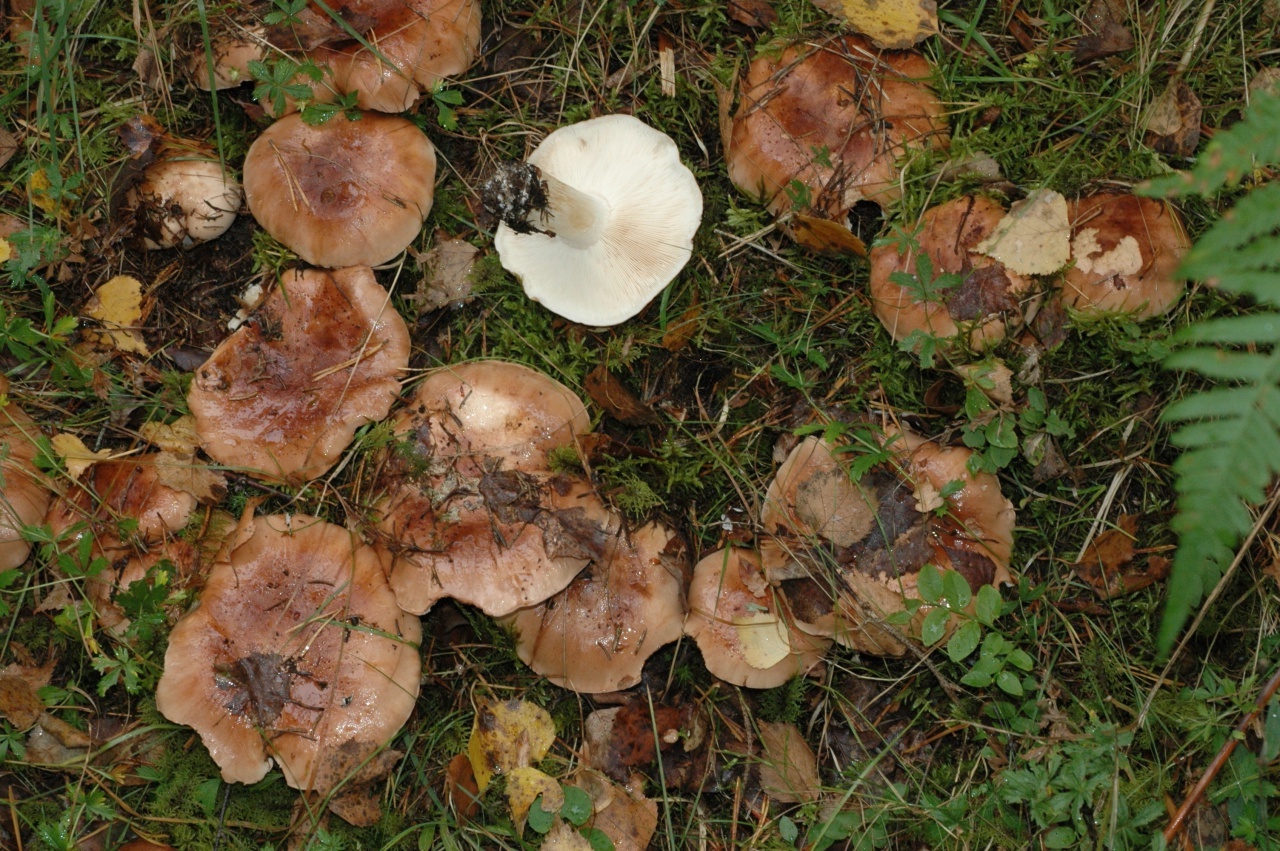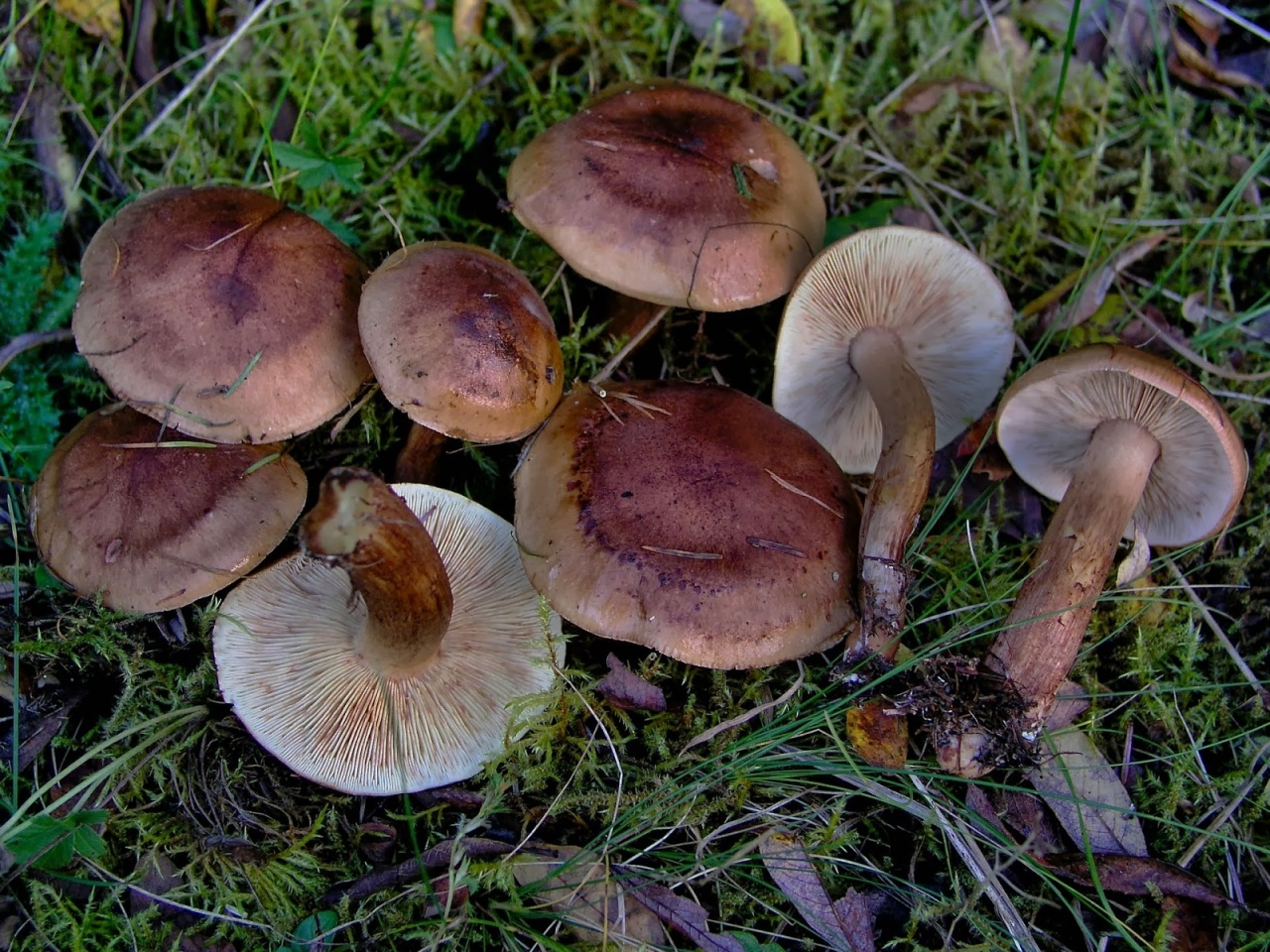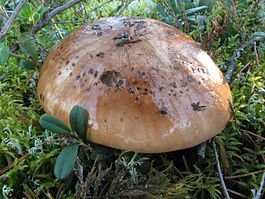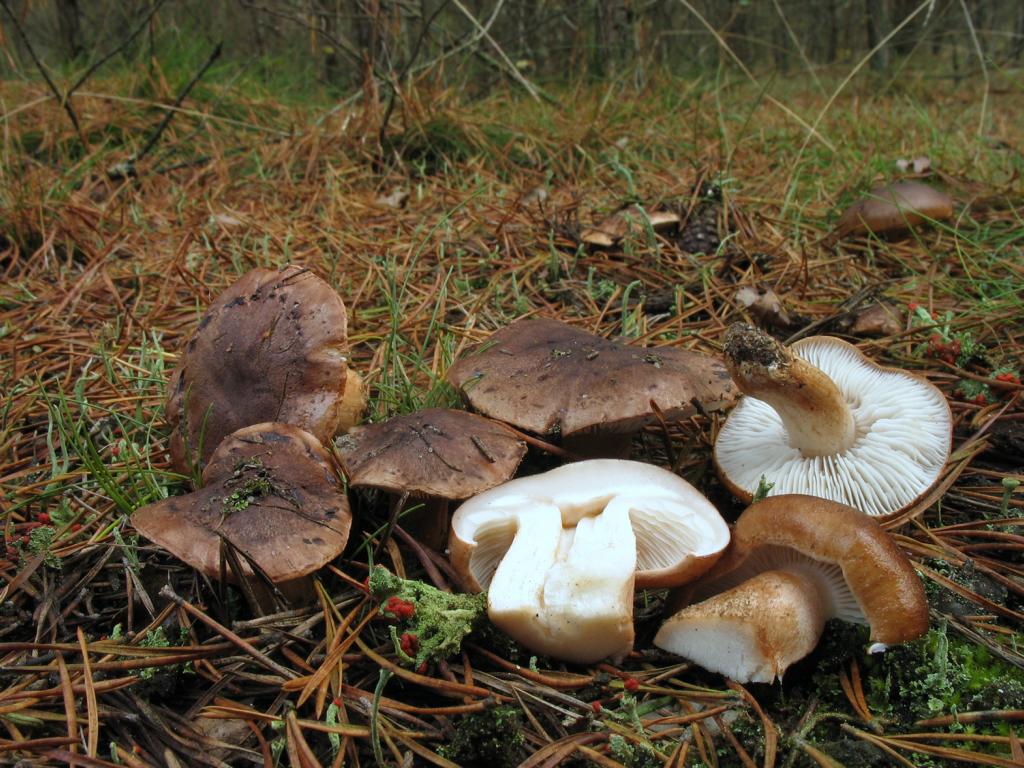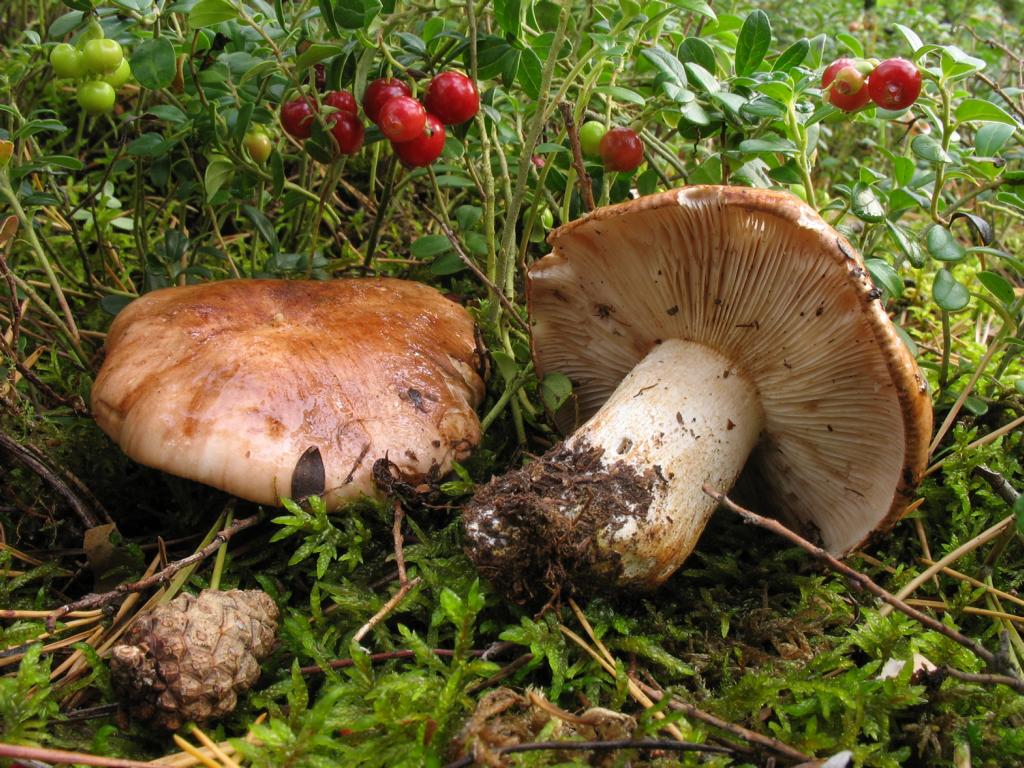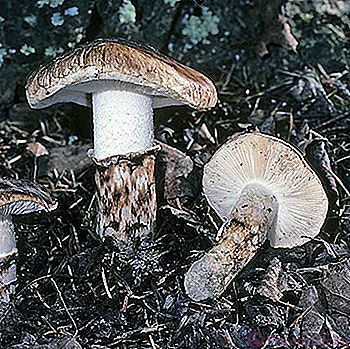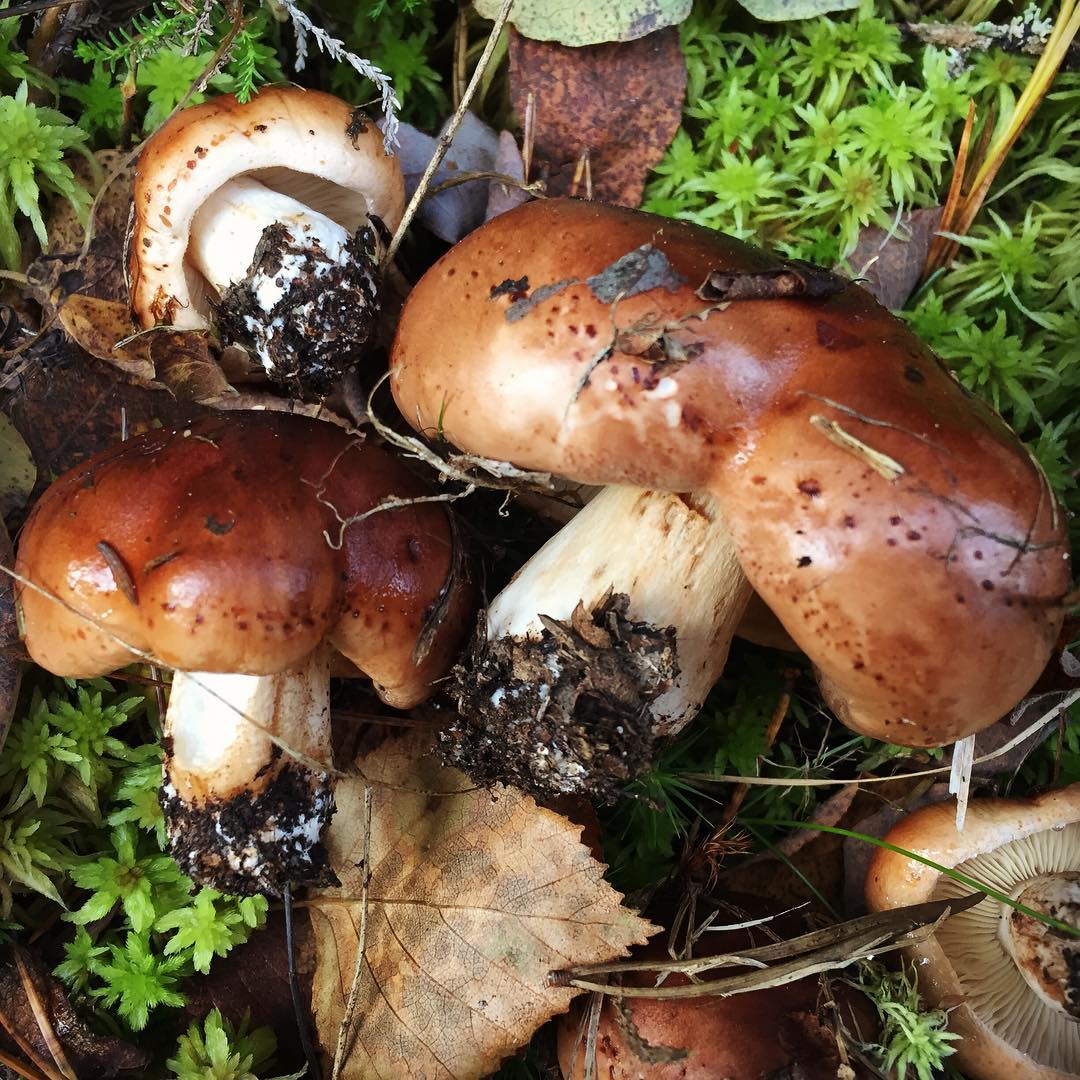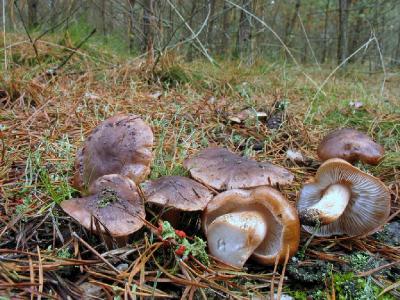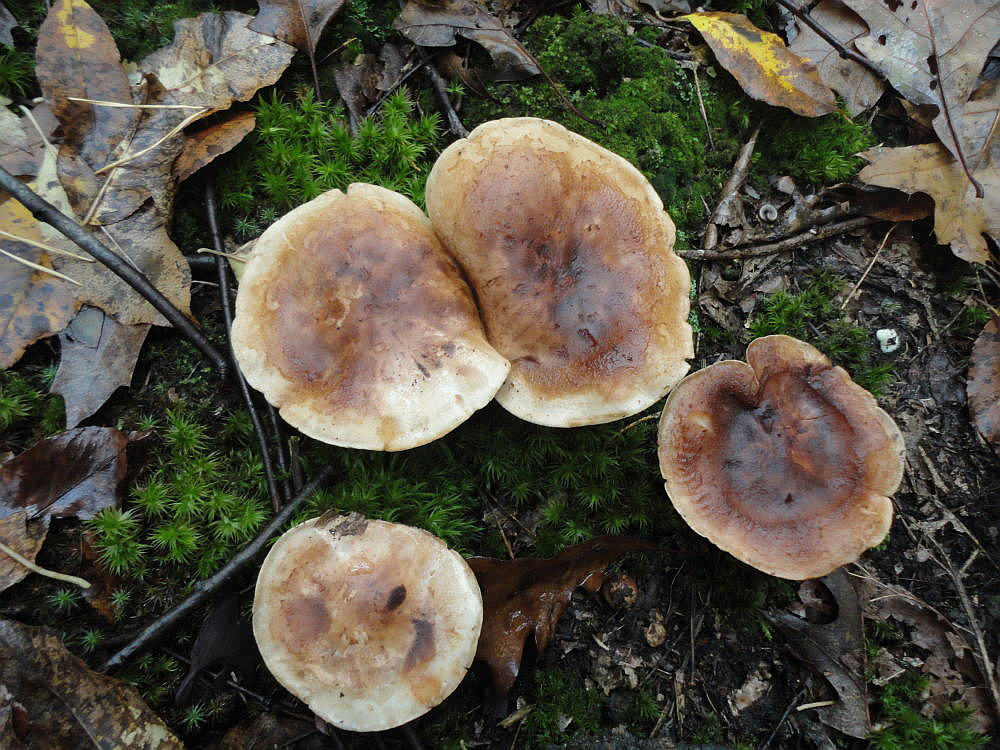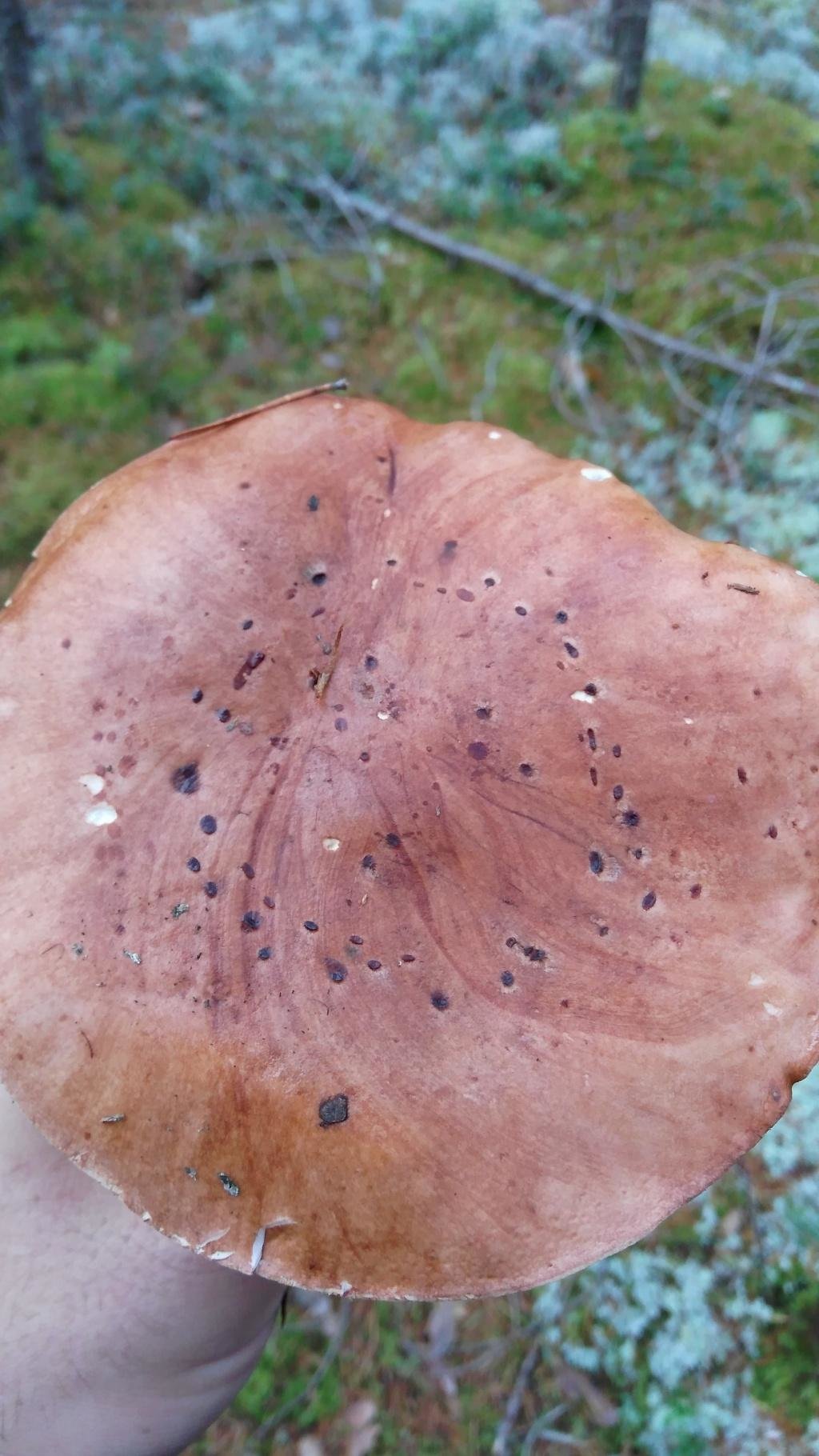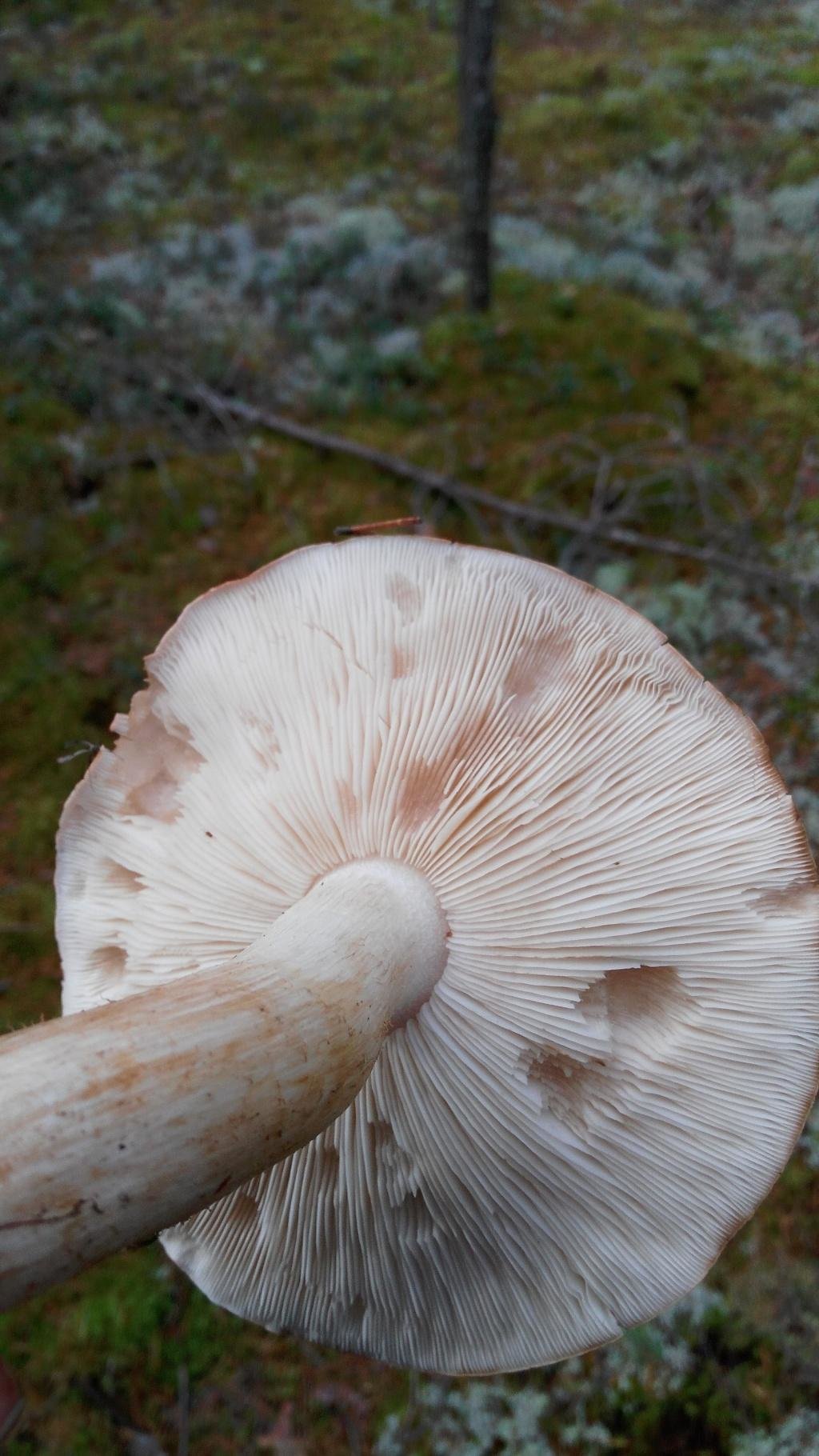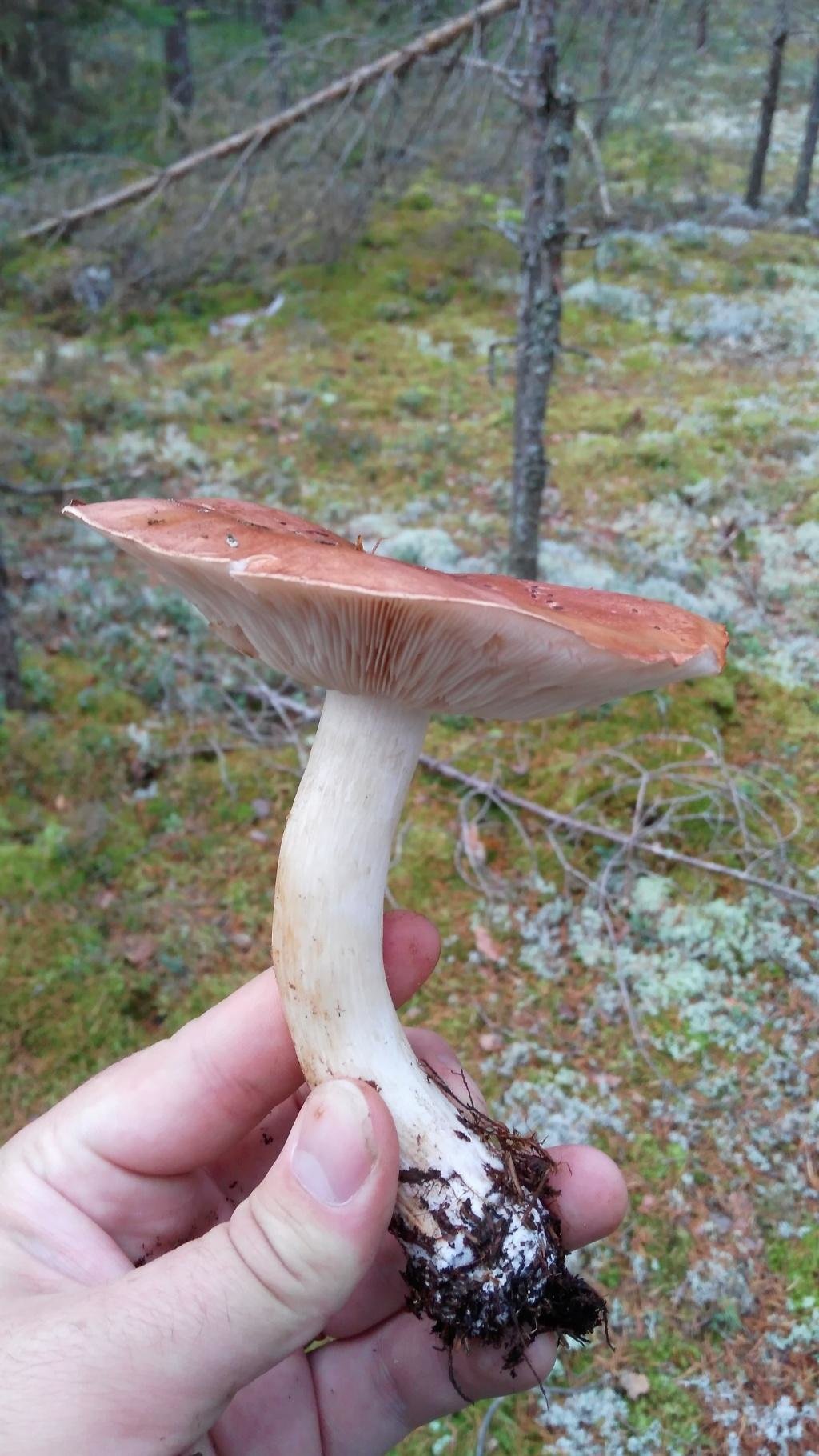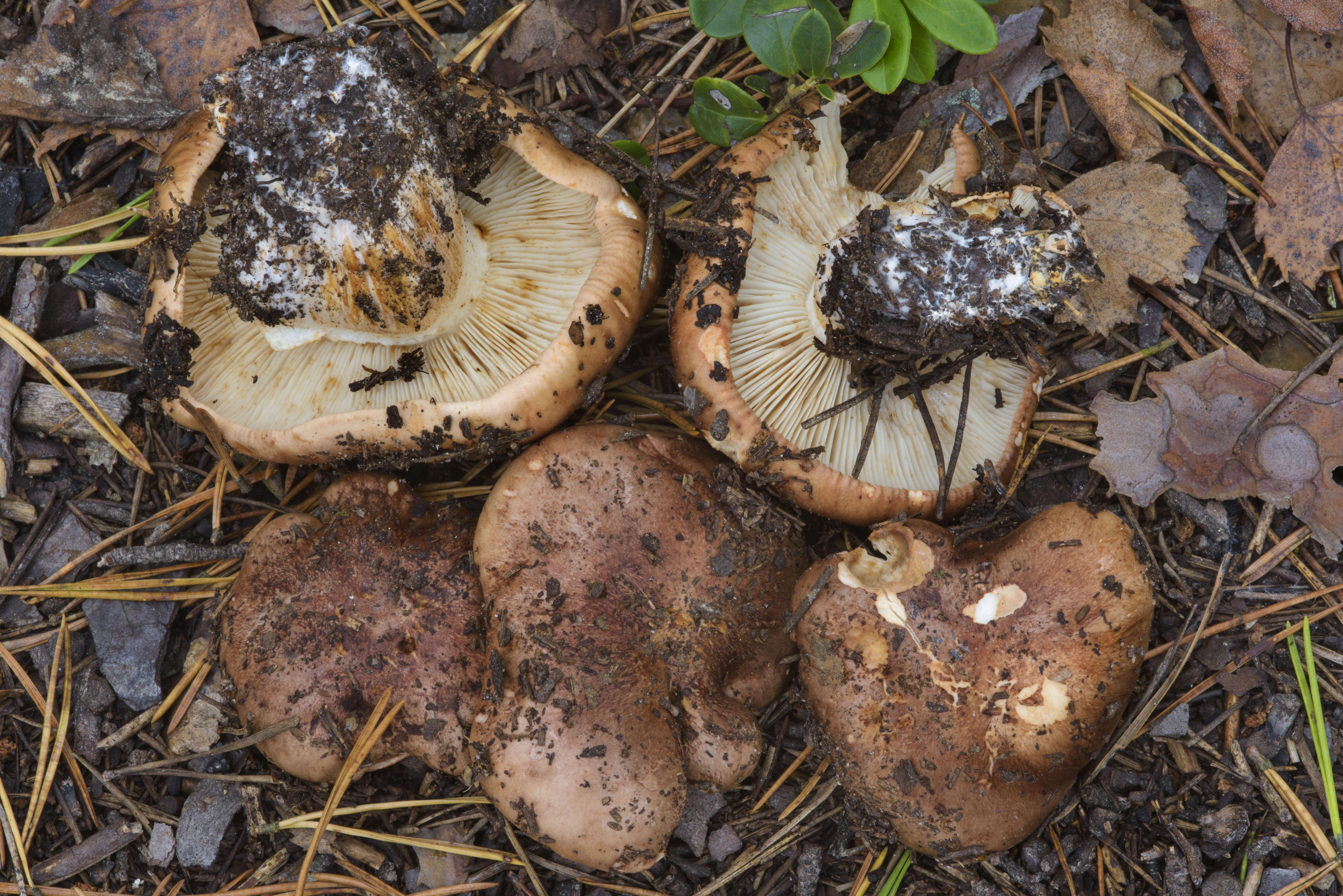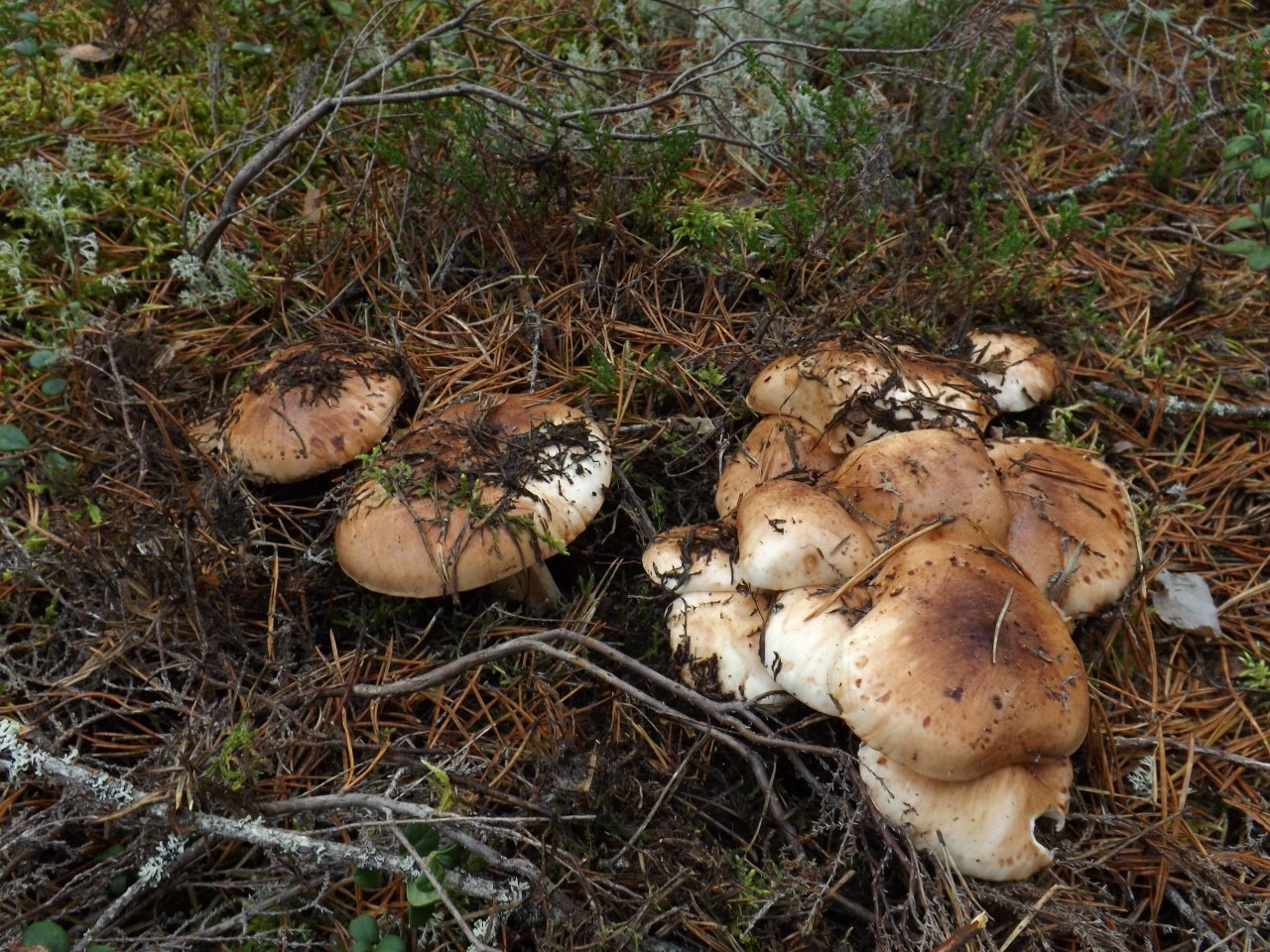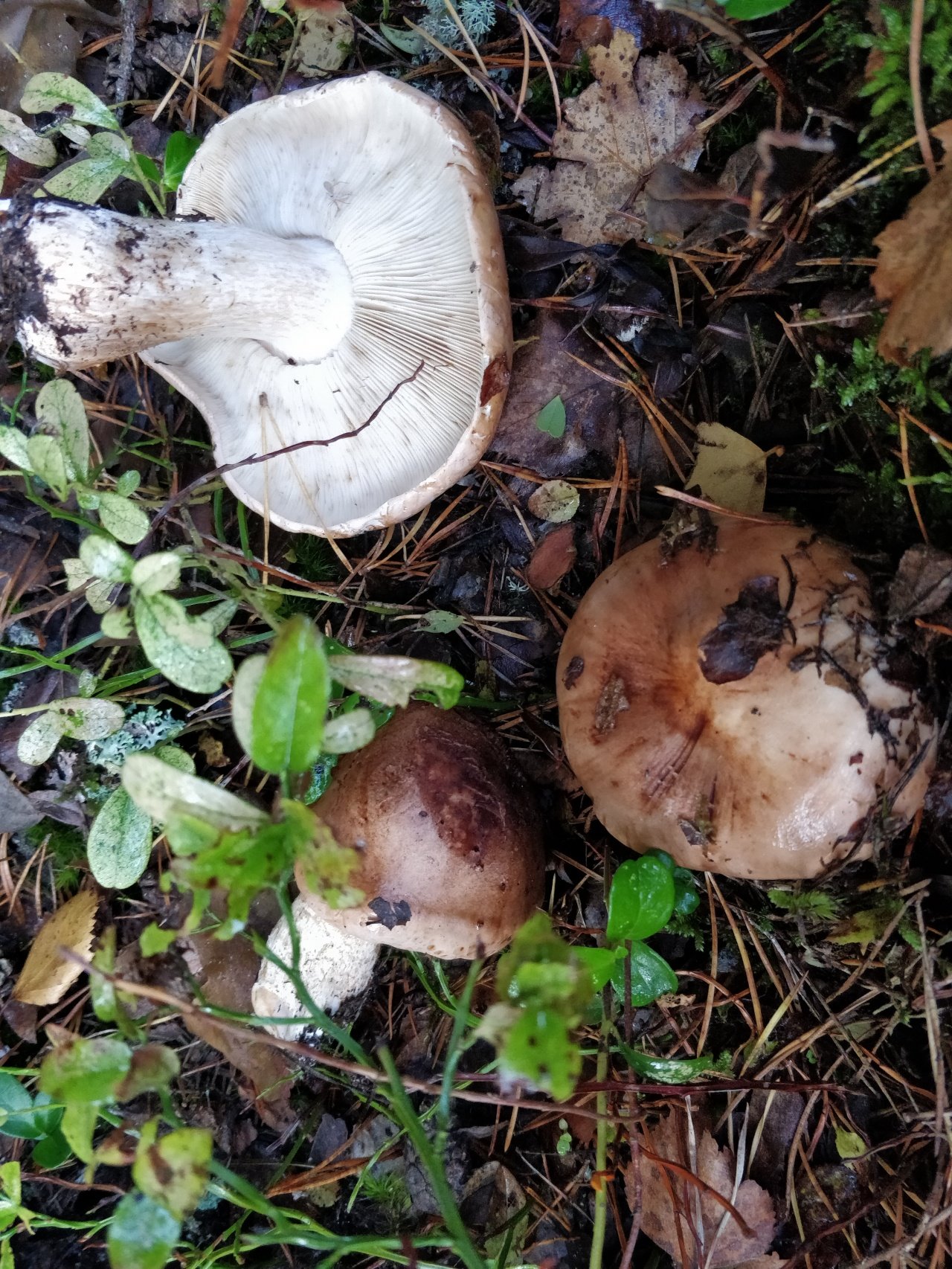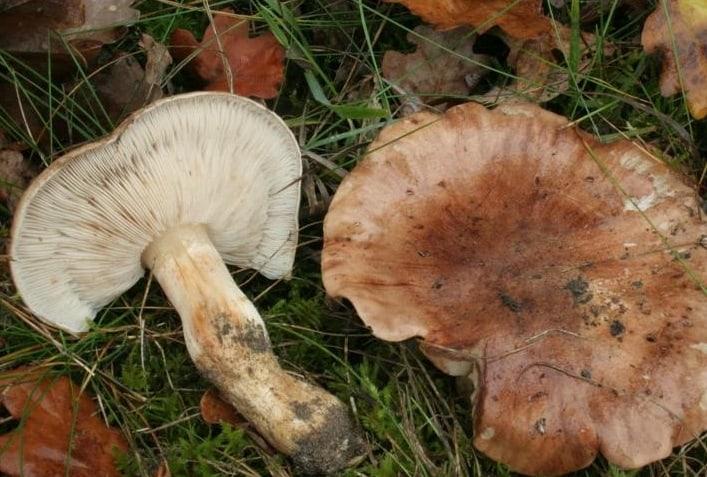Similar species:
The poplar row at a young age is a bit like the crowded row in color and shape, but, unlike it, it is much larger than it in size and has a slightly bitter taste due to the fact that it grows in such conditions that the cut mushroom is almost completely covered with sand or small debris. It is for this bitter taste that some open sources attribute it to conditionally edible mushrooms.
Some inexperienced gatherers may also confuse it with the poisonous tiger row. But there are many differences between them, but the main differences are that, firstly, the poplar row always grows in very large groups and near poplars; secondly, they are distinguished by color, in the tiger row it is more white-gray with dark gray shading in the center of the cap.
Poplar ryadovka is a very productive and easily accessible mushroom that grows in whole ridges and has a fairly high nutritional value. Therefore, it is especially appreciated in the steppe regions of Russia poor in other valuable mushrooms (for example, in the Saratov, Volgograd, Omsk regions and the Altai Territory)
According to its taste and consumer qualities, poplar ryadovka is related to edible mushrooms of the fourth category, it is completely suitable for eating, but only after soaking or boiling it, in order to eliminate bitterness in it.
Cultivation:
There are two ways to grow mushrooms: outdoors and indoors. The poplar row is grown on the street is technically easier. It is recommended to plant the crop in beds, in bags or boxes filled with substrate. As a substrate, you can use peat, soil for plants or ordinary soil.
In 5 kilograms of soil, add 100 grams of chalk and 1 liter of water. Add 50 grams of mycelium to the resulting mixture and mix gently. Spread the substrate mixed with mycelium in a box or bag and sprinkle it with a 5 cm layer of moist earth, cover with a film and provide high humidity and air circulation around the edges.
Mycelium grows best at 20 ° C. After the soil is overgrown with mycelium, the film is removed and the substrate is transferred to a shaded, humid place. The first fruiting bodies appear 4-6 weeks after planting. After each mushroom collection, water the soil or, even better, add a layer (3-5 cm) of moist soil.
Poplar rowing can also be grown in a room in which it is necessary to provide the minimum necessary conditions: high humidity and a temperature of 12-15 ° C, to provide constant ventilation and natural light. the substrate with mycelium should be provided with the necessary soil moisture. after harvesting each harvest, it is necessary to sprinkle a 3-5 cm layer of moist earth.
Ecology and distribution:
The period of growth of floodplains is from mid-August to early October. The main difference between the mushroom and others is its aroma. The underfloor units have a pleasant aroma of fresh flour. Thanks to this wonderful smell, underfloors are especially tasty when pickled or salted. It is better to pick mushrooms when young, when the mushroom cap has not yet opened. During this period, the pulp of the mushroom is hard, and practically not subject to worminess.
Poplar rows are common wherever poplars grow - these are the territories of North America and Canada, Western and Eastern Europe, Central Asia, as well as central and southern Russia, the Urals, Siberia and the Far East. The main period of her growth begins in the season of autumn leaf fall, somewhere from the end of August, and it ends at the end of October.
Shod row: photo, description and application
The very name "matsutake" from Japanese means "pine mushroom". He was christened for the corresponding characteristic living conditions. So, the ryadovka matsutake mushroom grows exclusively in pine and pine-oak forests.
Latin name: Tricholoma caligatum.
Family: Ordinary.
Synonyms: matsutake, pine mushroom, pine horns.
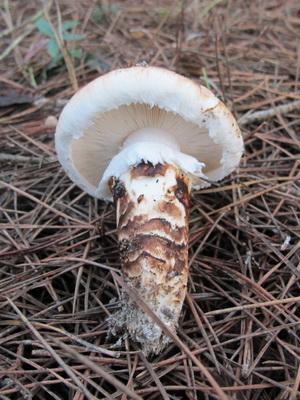
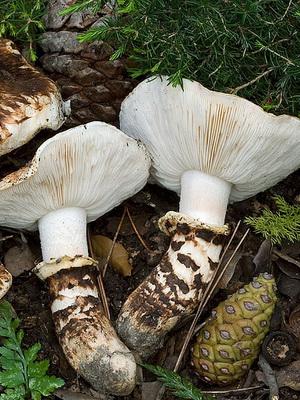
Hat: wide, 6-20 cm in diameter, thick, fleshy. Semicircular, with age it becomes flat-convex with a tubercle in the center. The color ranges from brownish gray to brownish chestnut. The surface of the cap is covered with small silky scales, which are located on a lighter background. The edges are most often cracked, and therefore white flesh can be seen.
Leg: high, can reach 20 cm, thick - up to 2.5 cm, slightly widened, often inclined, dropping close to the ground, although it is firmly held at the root. The upper part of the mushroom leg is shod in white, then there is a ring-skirt. Below the ring, the leg is brown with visible white spots.
Flesh: white, firm, with a slight cinnamon odor.
Plates: light, frequent, adherent to the stem. Young specimens have a protective film, under which the plates are hidden.
Application: it has good taste and is appreciated in Japanese, Chinese and Korean cuisine. After heat treatment, a pleasant sweetish aftertaste remains. It is fried, boiled, pickled, and also salted. The ryadovka matsutake contains a special antibiotic that has antitumor properties.
Distribution: the territory of Eastern and Western Europe, Canada, USA, Japan, China and Korea. In Russia, the shod ridge is found mainly in Eastern Siberia, in the Urals, as well as in the Primorsky and Khabarovsk territories. The mushroom grows in large colonies, forming the so-called "witch circles". The peduncle sits deeply in the soil, hiding under a layer of needles and fallen leaves. Prefers pine and pine-oak forests, bears fruit all autumn. The mushroom tolerates light frosts well, and under favorable conditions, its collection continues even in the month of November.
We also offer for clarity to see a photo of the shod row:
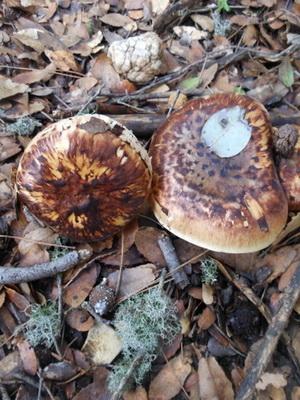
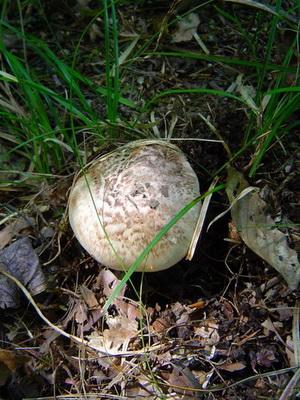
Features of taste
The poplar mushroom belongs to the edible category, but the characteristic taste of the pulp presupposes the obligatory implementation of preliminary processing of the fruit bodies in order to remove specific bitterness. As a rule, specimens with the most bitter flesh grow under silver poplars.
Such mushrooms need especially careful boiling or prolonged soaking. It should be noted that even in the process of very long culinary processing, the mushroom pulp of the underfloor is able to maintain a fairly dense consistency, therefore, fruit bodies of this type of ryadovka are especially highly valued by lovers of "elastic" mushrooms.
Cultivation:
There are two ways to grow mushrooms: outdoors and indoors. The poplar row is grown on the street is technically easier. It is recommended to plant the crop in beds, in bags or boxes filled with substrate. As a substrate, you can use peat, soil for plants or ordinary soil.
In 5 kilograms of soil, add 100 grams of chalk and 1 liter of water. Add 50 grams of mycelium to the resulting mixture and mix gently. Spread the substrate mixed with mycelium in a box or bag and sprinkle it with a 5 cm layer of moist earth, cover with a film and provide high humidity and air circulation around the edges.
Mycelium grows best at 20 ° C. After the soil is overgrown with mycelium, the film is removed and the substrate is transferred to a shaded, humid place. The first fruiting bodies appear 4-6 weeks after planting. After each mushroom collection, water the soil or, even better, add a layer (3-5 cm) of moist soil.
Poplar rowing can also be grown in a room in which it is necessary to provide the minimum necessary conditions: high humidity and a temperature of 12-15 ° C, to provide constant ventilation and natural light. the substrate with mycelium should be provided with the necessary soil moisture. after harvesting each harvest, it is necessary to sprinkle a 3-5 cm layer of moist earth.
Biological description of the spotted ryadovka.
Her cap is initially convex or hemispherical, later becomes flattened, sometimes in the center with a small depression. Its diameter is 3-15 centimeters. The color of the cap is red-brown or yellow-brown. The edges are ribbed, lighter than the main background. The surface of the cap is radial-fibrous, smooth; in wet weather, a layer of mucus appears on it.

The pulp gives off a mealy odor and has a slightly bitter taste. The color of the pulp is white, sometimes there are brownish spots.
There is a lamellar hymenophore under the cap. The plates are adherent or notched. They are located often. The color of the plates at a young age is whitish, and later they turn yellow. In addition to the plates, there are numerous small plates. The spores are wide-ellipsoidal. The color of the spore defect is white.

The leg is cylindrical, slightly widened in the lower part. Its height is 2-6 centimeters, and the girth reaches 2 centimeters. The inside of the leg is sometimes hollow. The surface of the stem is fibrous or smooth. The coloration is white, with a distinct pale area at the top. When touched, the leg turns a little brown.

Distribution and ecology of spotted rowers.
Spotted rows bear fruit, as a rule, in groups. They grow in mixed and coniferous forests. This type of mushroom forms mutually beneficial alliances with fir, pine, spruce and other coniferous trees. Spotted rowers are found from September to November, and in the south of the range they are found until December.
These mushrooms are widespread in Europe. Also, this species is abundant in the central part of North America.

Evaluation of the edibility of the spotted row.
The spotted ryadovka is unsuitable for food in any form, it is a poisonous mushroom. Although the fruiting bodies contain a low amount of toxins, when they enter the body, they provoke poisoning.
The similarity of the spotted row with other species.
The white-brown row is similar in appearance to the spotted row, but it can be recognized by the slimy cap and the leg that quickly darkens when touched. Her cap can be convex or flattened with a tubercle. The color of the cap is red-brown. The surface of the cap is slightly sticky. The leg is slightly thickened at the bottom, velvety, pink-brown in color with a white zone at the top. The pulp is bitter in taste, with a powdery odor, white in color.

This is a conditionally edible type of mushroom. They grow in mixed and coniferous forests. White-brown ryadovki settle in large groups. They choose acidic and infertile soils. With pines, these fungi form mycorrhiza.
The poplar row is another twin of the spotted row, but these two species differ in places of growth. Poplar ryadovka belongs to conditionally edible mushrooms. Her hat is fleshy, hemispherical or outstretched. The surface of the cap is slippery. The color of the hat is pink-brown. The leg is fleshy, at first whitish, and then reddish-brown. The pulp is thick, with the smell of flour, white in color.

Poplar rows grow in mixed forests, they settle under poplars, oaks, aspens, pines. They bear fruit from August to October. They are found in whole ridges. In regions poor in mushrooms, poplar rows have a fairly high nutritional value.
Pickled poplars
It is very easy to marinate podpolniki for the winter. The peeled fruit bodies should be boiled for about half an hour or blanched for no more than seven minutes, removing the foam. Arrange boiled or blanched mushrooms in sterilized jars, adding black peppercorns, cloves and bay leaves. To prepare the marinade, for each liter of water, add three tablespoons of vinegar, a tablespoon of salt and one and a half tablespoons of sugar. Pour the mushrooms laid out in the jars with hot marinade and roll up the jars. Such canned mushrooms are stored for at least a year.
It should be noted that in addition to very good taste characteristics, the substances included in the composition of the mushroom pulp help to improve appetite, accelerate metabolic processes and lower cholesterol levels.The pulp of ryadovka poplar is able to stimulate the work of the gastrointestinal tract, and also contains few calories, therefore it perfectly complements the menu of vegetarians or people adhering to a diet.
Useful properties and possible harm
Poplar ryadovka has a high culinary value and low calorie content. According to the description, its composition is close to what is present in meat.
It contains components useful for humans:
- B vitamins;
- PP;
- vitamin C;
- keratin;
- potassium;
- selenium;
- phosphorus;
- organic acids: citric, oxalic and tartaric;
- enzymes that break down fats, etc.
Medicinal properties are used in pharmacology. On the basis of mushroom extract, medications of the antibiotic group are produced for the treatment of tuberculosis.
Fruiting bodies activate metabolic processes, enhance immunity, help prevent the development of malignant neoplasms, stimulate the activity of the stomach and intestinal tract, regulate blood pressure and reduce cholesterol and sugar levels.
When they are included in the diet, there are no contraindications within the permissible limits. Should not be used by children under the age of 3 and patients with chronic renal and hepatic diseases.
Cooking recipes
Rows are used boiled, fried, pickled, added to soups, sauces and casseroles are prepared. Caviar made from them is especially tasty.
Primary processing
After harvesting, the fruits are examined, wormy specimens and forest debris are removed, washed under running water. In case of heavy contamination and to remove possible bitterness, they are soaked for 2-3 hours.
Cooking
This is the main type of processing. It is carried out in 2 stages with the subsequent draining of the broth.
Ingredients:
- mushrooms - 1 kg;
- water - 1 l;
- vinegar - 1 tbsp. l.
The process is step by step:
- Heat water, add vinegar.
- Dip the mushrooms in a boiling mixture, boil for 10 minutes.
- Drain the liquid.
- Place the mushrooms in a colander and cool.
- Boil in a new portion of water with vinegar for 10-15 minutes.
- Rinse.
After that, the rows are prepared in various other ways.
Pickling
For 1 kg of boiled fruits you will need:
- water - 1 l;
- salt, sugar - 2 tbsp each l .;
- bay leaf - 3-4 pcs.;
- peppercorns - 4 pcs.;
- garlic - 1 clove;
- table vinegar 9% - 1 tbsp. l.
How to prepare:
- Cook the marinade from the above ingredients for 15 minutes, at the end add another 1 tbsp. l. vinegar.
- Arrange the mushrooms in sterilized jars, pour the hot mixture.
- Cool at room temperature, then put in a cool place.
The product will be ready in a month.
Frying
In this form, ryadovki are used as an independent dish and in combination with other relatives and potatoes:
- boiled skulls –250–300 gr;
- vegetable oil - 3-4 tbsp. l .;
- onions - 2-3 pcs.;
- salt, spices - to taste.
Preparation:
- Peel the onion, chop, fry until transparent.
- Add mushrooms, fry for 12-15 minutes until golden brown.
- Salt, season.
Salting (classic method)
- rows - 1 kg;
- salt - 40–45 gr;
- black peppercorns - 6-7 pcs.;
- currant leaves, horseradish - 3-5 pcs.;
- bay leaf - 3-4 pcs.;
- dill umbrellas - 2 pcs.;
- garlic - 3-4 cloves.
Preparation:
- Rinse the fruit bodies, soak in cold water for 10-15 minutes.
- Divide the horseradish leaves and dill umbrellas into portions, cut the garlic into thin slices.
- Put 1/4 of the spices in the prepared container, add a layer of mushrooms on top, salt.
- Alternate layers: spices and seasonings – ryadovki – salt. The last layer is spices.
- Put under oppression.
- Store in a cool place.
The product is ready in 1.5-2 months.
Row caviar
- mushrooms - 200-300 gr;
- onions - 1 large or 2 medium-sized heads;
- vegetable oil - 3-4 tablespoons;
- salt, spices - to taste.
Preparation:
- Peel the fruits, rinse, boil.
- Cool, drain off excess liquid.
- Grind or grind in a food processor.
- Fry the onions in vegetable oil until light golden brown.
- Combine with chopped mushrooms, mix well, add salt and spices.

